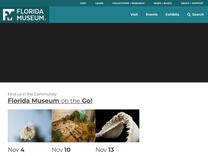Botanizing with Marc – Randell Research Center https://www.floridamuseum.ufl.edu/rrc/blog/botanizing-with-marc/
Visitors to the Calusa Heritage Trail come for a variety of reasons—some to learn about the archaeology, some for the fresh air, some to see some of the 100+ kinds of birds that come through the site. And, almost everybody notices the diverse array of interesting plants, some familiar, some
lichens in archival paper packets, seeds, wood sections, pollen, microscope slides, DNA

